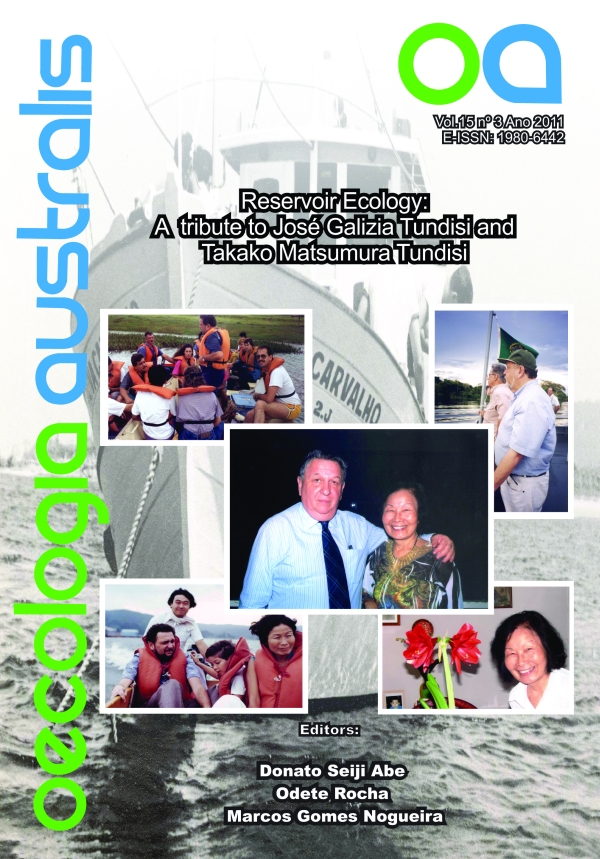LIMNOPERNA FORTUNEI (DUNKER 1857) EN EL SISTEMA DE EMBALSES DEL RÍO NEGRO, URUGUAY
Keywords:
Mejillón dorado, zooplancton, larvas, embalses, UruguayAbstract
LIMNOPERNA FORTUNEI (DUNKER 1857) IN THE RESERVOIR NEGRO RIVER SYSTEM, URUGUAY. Limnoperna fortunei is an invasive mollusk species reported in the Plata Basin since 1991, invading the major water systems in the region, affecting human infrastructure and causing ecological alterations. In Uruguay it is reported in five of the six major river basins, including the system of reservoirs in Río Negro since 1999. The development of population control strategies to mitigate the effects caused by this species requires basic studies of their life cycle. This contribution describes the annual cycle of pelagic stages and larval settlement of L. fortunei in the reservoir Palmar, Río Negro. Sampling was conducted during 2006-2008, using continuous sampling systems, static or stratified ones, by seasonal or monthly intervals. Environmental parameters were similar to previous studies in the system, the zooplankton community showed holo (Rotifera, Crustacea) and merozooplankton (L. fortunei larvae), showing a seasonal behavior. The golden mussel larvae showed a seasonal pattern with peaks during austral spring and autumn and absence during winter, and did not differ between strata analyzed and the various stages did not show a clear temporal variation. The temperature did not show significant associations with larval abundances but was a set of environmental variables (temperature, Kd and residence time) which explained the variability of the zooplankton community and larvae of L. fortunei. The abundance L. fortunei individuals settled showed spatial and temporal variations, the minimum was found in February and March and the maximum in December. Significant differences were found between the abundance of organisms settled on substrates located at surface (0.5m) and bottom (10m). The observed maximum size of an individual settled was 22mm body large, showing differences in growth between surface and bottom. Recruitment patterns showed two peaks per year: January-February and September-October, coinciding with pelagic annual cycle, as evidenced by two annual cohorts, results similar to other studies in the region. The identification of larval behavior and settlement patterns of the golden mussel in the reservoir Palmar make possible the design of control strategies for the Río Negro reservoirs.
Keywords: golden mussel; zooplankton; larvae; reservoir; Uruguay.
Downloads
Downloads
Additional Files
- Taxón do zooplancton (Português (Brasil))
- Abundância de indivíduos Limnoperna fortunei assentados (Português (Brasil))
- Local do estudo (Português (Brasil))
- Local do estudo (Português (Brasil))
- Painéis Design (Português (Brasil))
- MDS análise da comunidade zooplanctônica (Português (Brasil))
- Abundância larval de L.fortunei (Português (Brasil))
- Densidade (org m-2) assentada de L. fortunei (Português (Brasil))
- Comprimento total vala L. fortunei (Português (Brasil))
- Histograma de freqüência de tamanho L. fortunei (Português (Brasil))
- Carta de Submissao (Português (Brasil))


